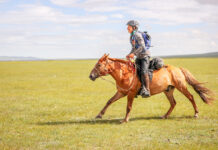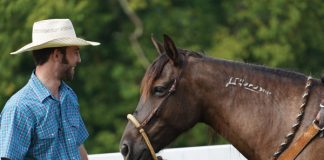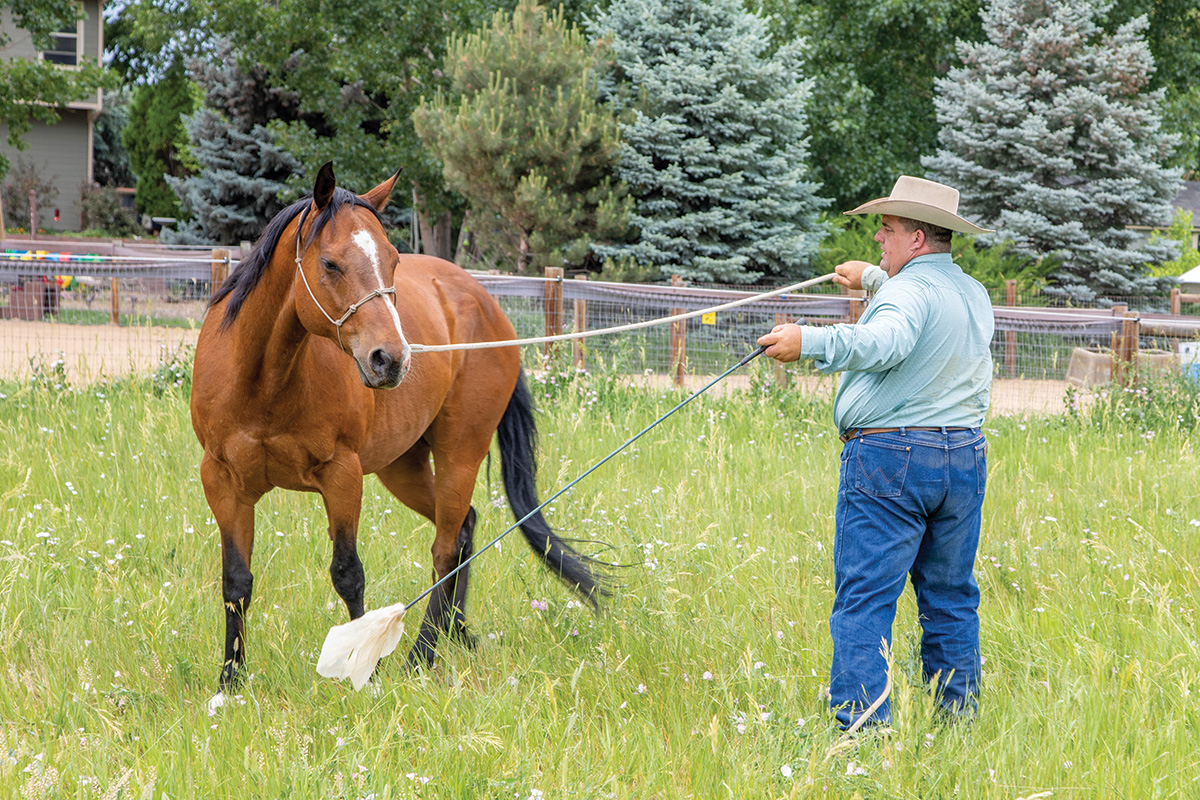
Getting to know how your horse feels by doing groundwork before a ride is a great idea. However, the groundwork you do has to have meaning. Make sure that your groundwork doesn’t become routine and allows time for you to notice your horse’s reactions and willingness.
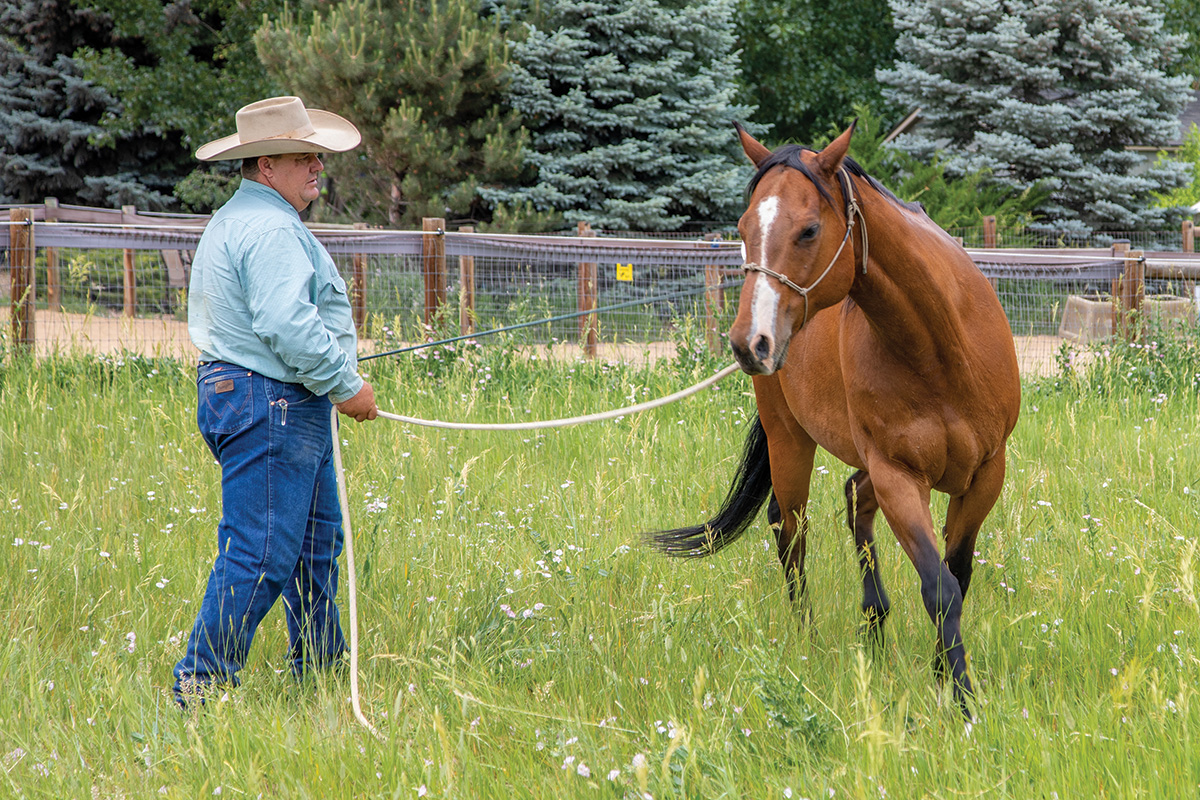
Here, Brashear helps you learn how to make sure your horse is tuned in instead of using groundwork to tire your horse out.
“Make sure your horse is with you mentally and physically before you get on to ride,” he says. “We aren’t talking about longeing your horse for 30 minutes to tire him out. We are looking to make sure that your horse can move easily and that he’s in a stable mental state to go work. And if he’s not, we want to work with him until he is.”
Brashear likes to work with his horse on the ground before he gets on. To start, outfit your horse in a rope halter with a long 12- to 15-foot rope leadline attached with a knot. You may choose to use a stick with a flag to help you give your horse more direction.
Turning with Purpose
The task: Ask your horse to walk in a circle to the right by holding the long leadline with both hands. Place your flag in your left hand to drive the horse to the right while simultaneously raising your right hand to point in the direction you’d like the horse to move. If your horse just turns to face you and stops, wave your flag to cue him to keep moving.
“I’m not asking the horse to disengage his hindquarters and stop and face me; I want to see him move around me in a consistent, round circle,” Brashear says.
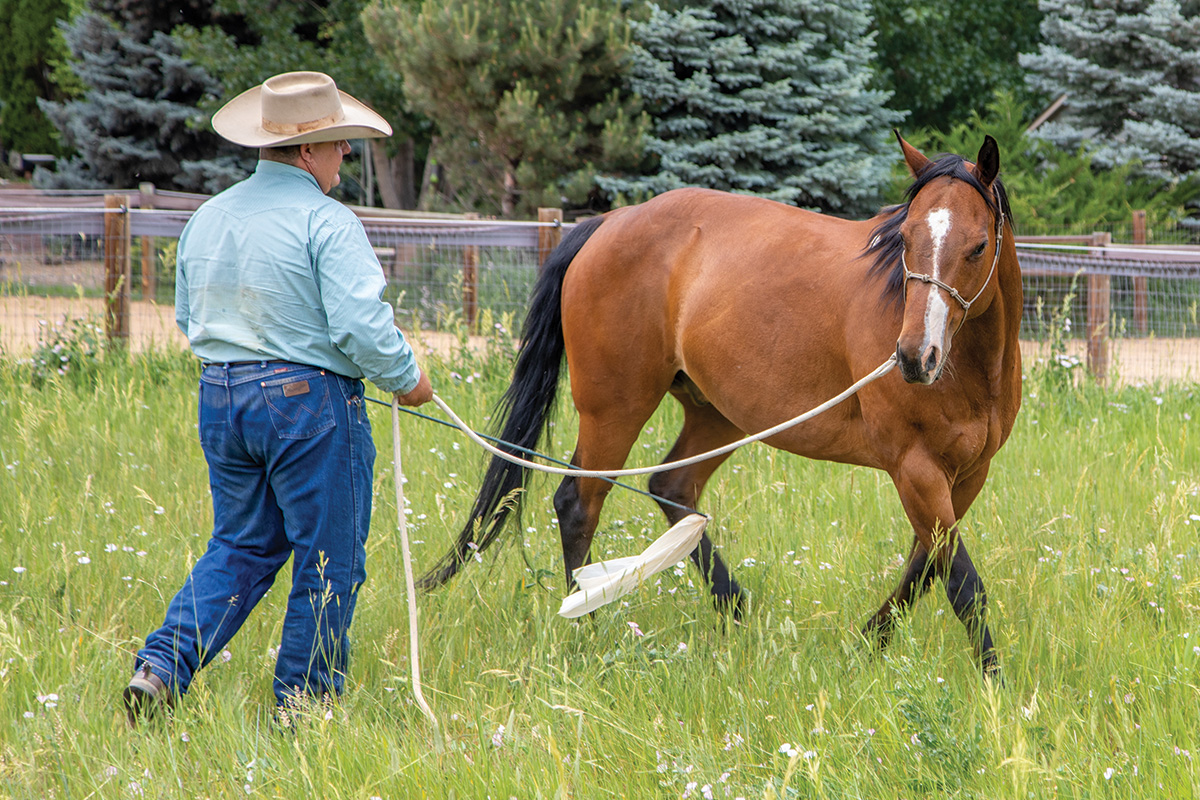
Cue him forward in the circle by walking forward toward his tailhead and waving your flag as needed. You only want your horse to walk; if he trots, slow him down by tugging gently on the lead rope.
If your horse only moves his hindquarters away, use your flag to also move his shoulder away. If your horse only moves his neck in the turn, use your flag to push his hindquarters away.
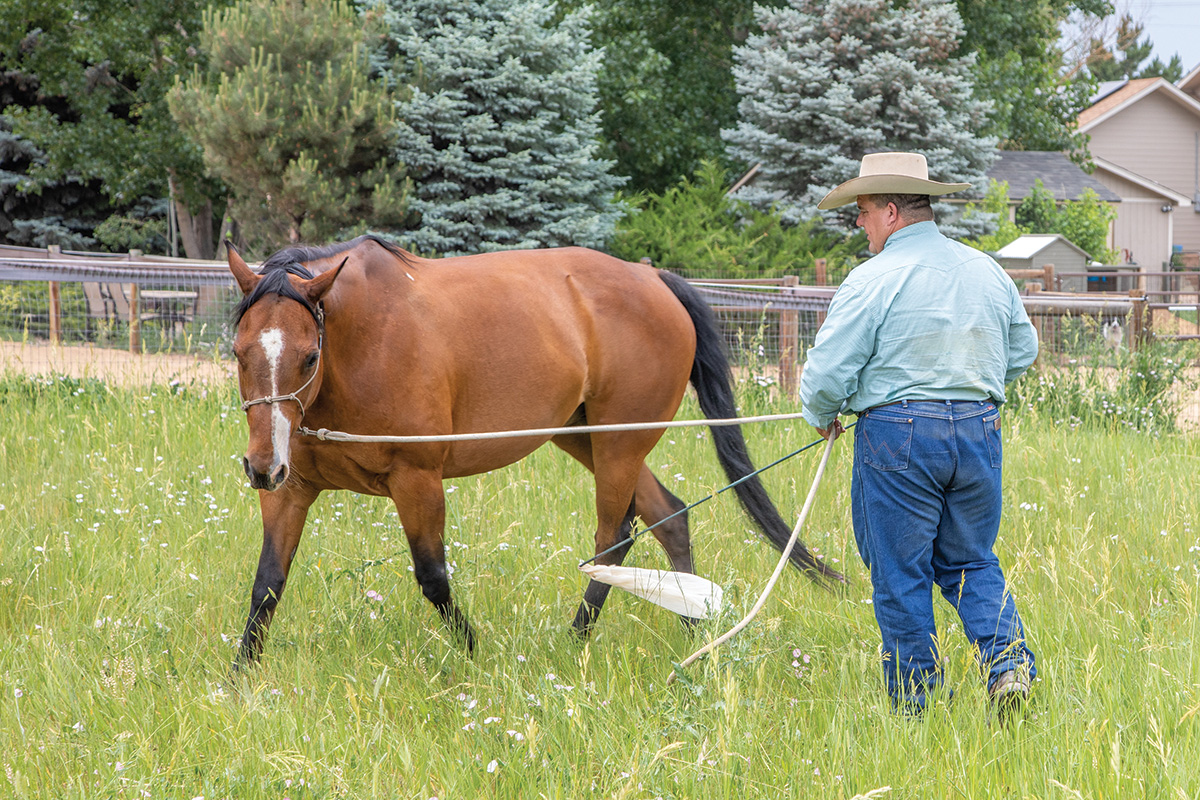
Once your horse will move to the right well, it’s time to change direction. Change your hands on the lead and move your flag to your right hand. Your horse should cross over and move to the left.
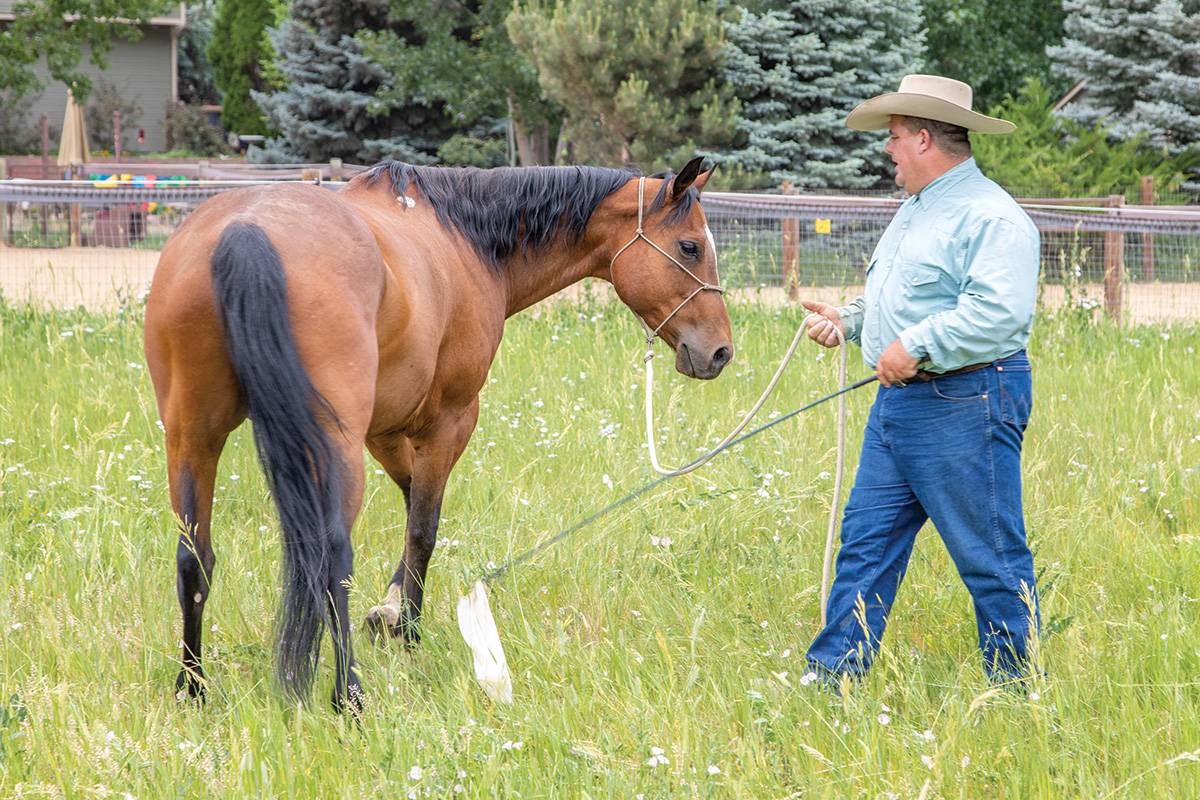
Behaviors to notice: You don’t want your horse to move lethargically. He should have some movement and willingness to follow your directions in a timely fashion.
Watch your horse’s poll and jaw. Ideally, your horse will relax his poll and tuck his jaw down. This shows that he’s moving in a relaxed fashion. When a horse lowers his jaw, he can’t brace. Any time your horse lowers his poll and tucks his jaw, make sure that your body cues are relaxed.
You want your horse to round his body and his topline in the direction of the circle. Make sure that your horse bends his neck and his hindquarters equally. You don’t want your horse to only move his hindquarters or only move his head. Look for overall body flexion.
“I look for the horse’s expression, as well as his neck position in relation to his body,” Brashear says. “I want to work with my horse through his mind, down to his body and his feet.”
Walk With Me
The task: For this exercise, drop your flag and work with your horse’s halter and nose pressure. You want him to move forward and back on command. With your horse standing still, stand in front of him (and slightly to the side for safety). Hold the sides of your horse’s halter and ask him to move forward one step. When he steps forward, release the pressure on the halter.
To go back, gently push on your horse’s nose where the halter’s noseband touches his face. Push gently and release your pressure when he steps back willingly.
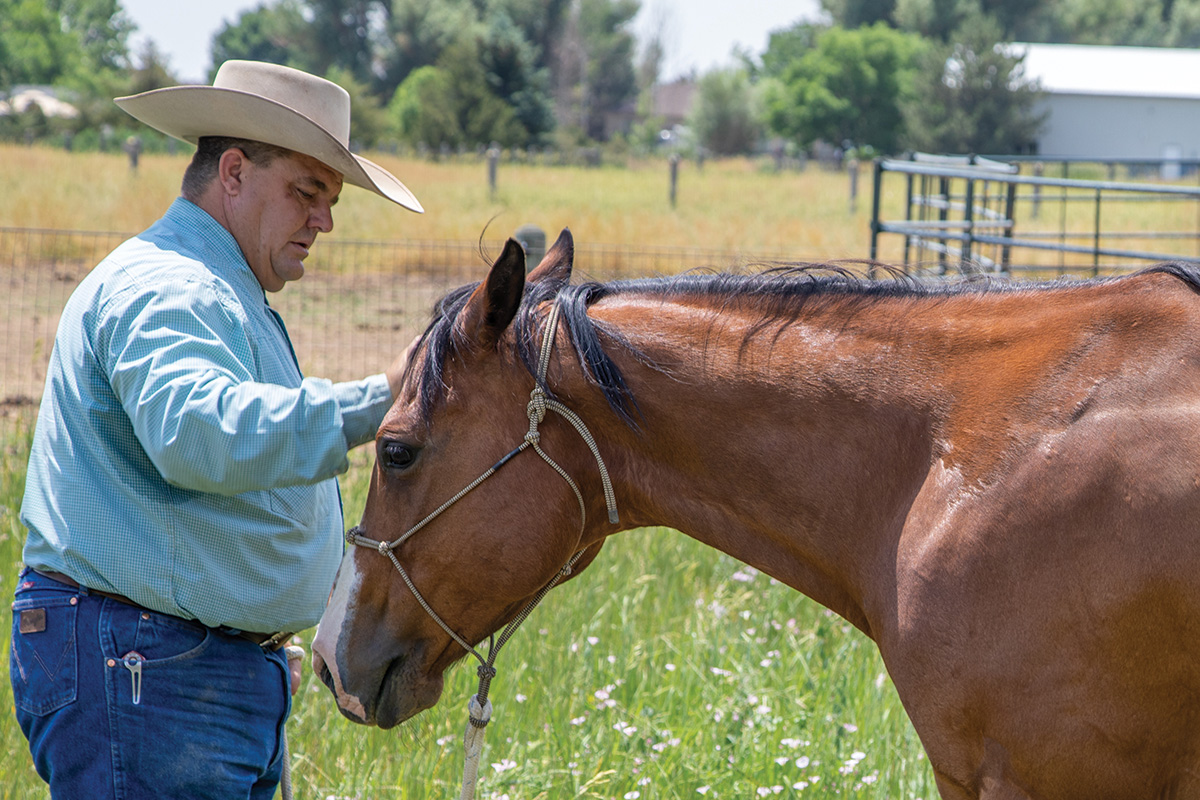
You can also push down gently on your horse’s poll to ask him to drop his head and move away from the pressure. All of these movements require your horse’s quick and willing reaction.
Behaviors to notice: Make sure to notice your horse’s slightest try. Doing this simple activity will help your horse learn that if he does the right thing, you will praise him with a release of pressure.
When you release the pressure, make sure that you move slowly instead of quickly removing all pressure, which can spook your horse. When you take off pressure, the horse feels a relief and wants to work to get that release again. When you move slowly, you’ll teach your horse to give and help him soften and relax.
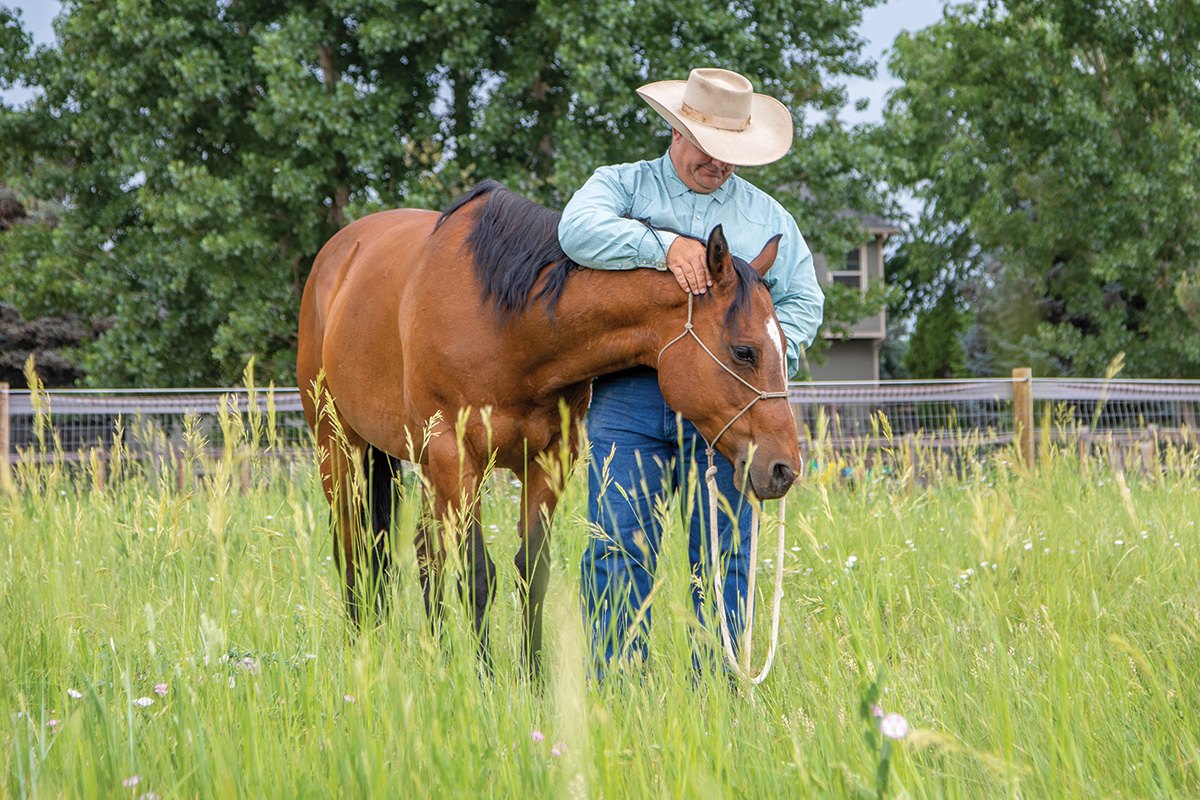
Your horse’s willingness to give and release will transfer to your rein and leg aids when you ride.
“I just want to get along with my horse,” Brashear says. “Instead of getting my horse in a sweated-up fit, I want him to do as I ask, relax, and try.”
Meet the TrainerMike Brashear trains horses of all levels with natural and traditional horsemanship techniques. He focuses on creating relationships between horses and riders at clinics and during private training sessions. He and wife Laura live near Fort Lupton, Colo. Be sure to view his clinic schedule. |
This article about groundwork with your horse appeared in the January/February 2022 issue of Horse Illustrated magazine. Click here to subscribe!


